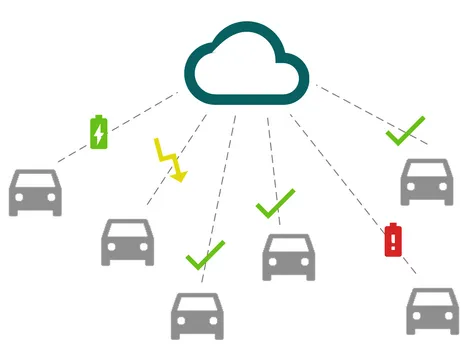

Problem
With the shift towards green mobility, the interest in battery technology and the electric storage of electric vehicle gains momentum. Being a very expensive component holding many valuable materials and being highly complex, the battery system of cars needs tight supervision.
Method
With the paradigm of digital twins, we want to model the entire life cycle steps of a battery system from Engineering to production to the usage in automobiles and in a potential second life. To do so, we approach from two different directions:
1. Direction "DATA"
In this bottom-up approach, a meta-model was proposed depicting all life steps of a battery system. Important attributes and data are collected here and stored in a structured way. We choose classic uml-models here to model the data and processes since this gives us many possibilities in applying and use the metamodel. From the meta-model real NoSQL databases can be obtained and used in a cloud service environment.
Further on, a management-layer sits on top of the structured data. The management layer coordinates digital twins and the incoming data. An analytics layer allows access to the data and aggregated information.
Altogether, the three layers form a digital twin framework, with which any service can be implemented-.
2. Direction "Stakeholder"
In parallel to 1. the top-down approach considering stakeholders is carried out. In a stakeholder analysis, we firstly collect stakeholder using multi-methods approaches. Then, detailed analysis of the stakeholders' interests and actions is made to understand the complex relationship between actions of stakeholders of different life cycle phases and interests other stakeholders may have.
Results
Combining the two approaches, we want to implement services and applications fitting to the stakeholders' needs and building on top of the digital twin framework.